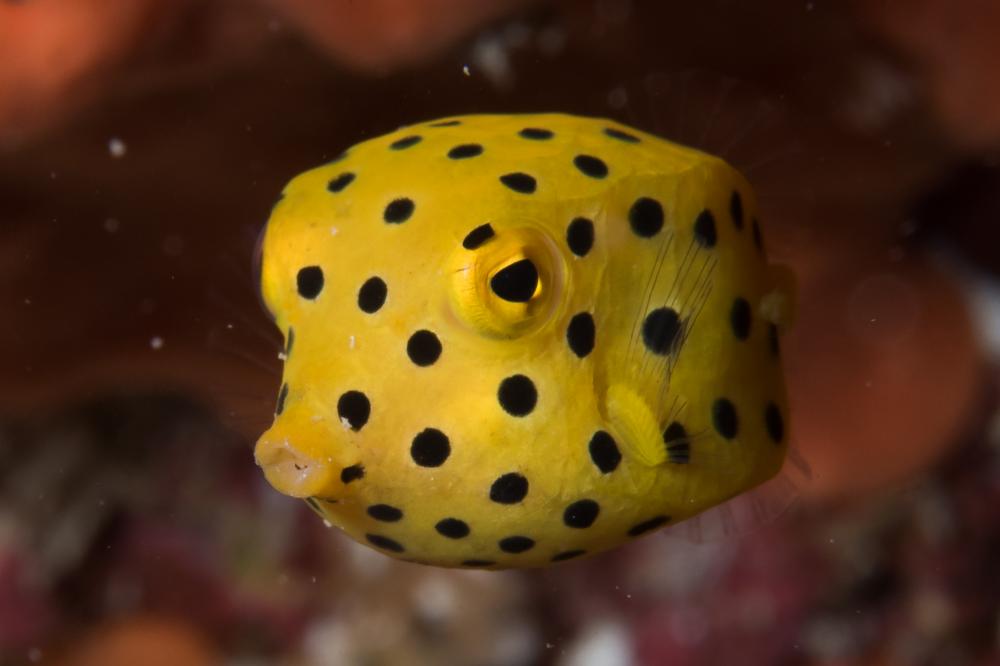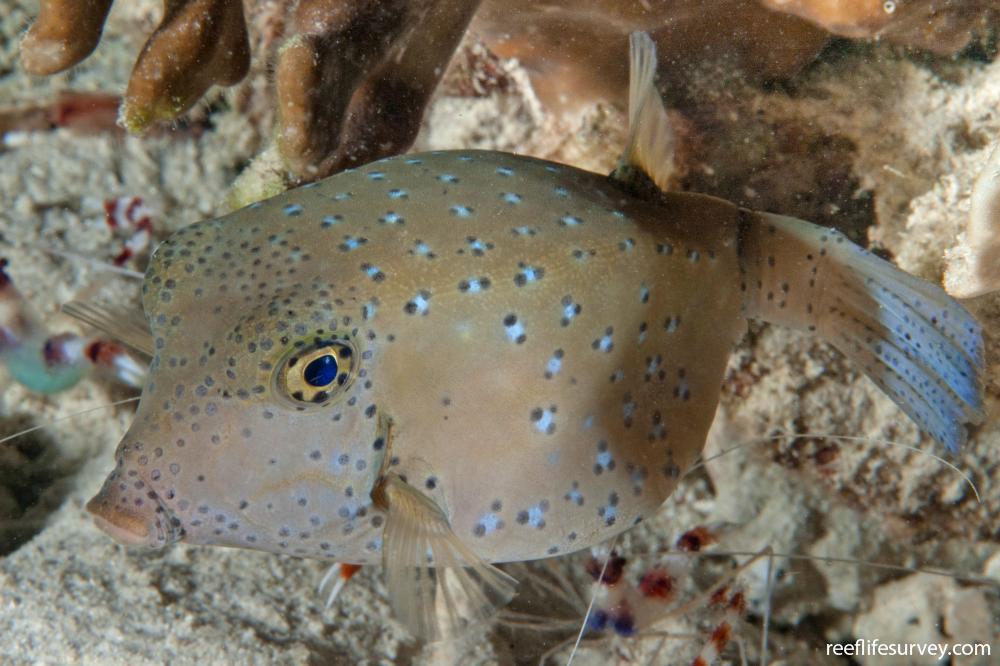Ostracion cubicus
Yellow boxfish | Bluespotted Boxfish | Box Fish | Boxy | Cubed Boxfish | Ocellated Boxfish | Polkadot Boxfish | Yellow TrunkfishSimilar Species
Same Genus
Distribution
Temperate Africa, Tropical Indo-Pacific
Description
Juveniles yellow with black spots. Yellow fades to brown with age, with black spots becoming fewer and a honeycomb pattern developing around spots and over face. Large adults blueish with yellow exposed tail base and honeycomb pattern, with central small black spots dorsally.
Information
Max Size: 45 cm
Sea Temperature Range: 16.2-31.6°C
Depth: 1-280m
Habitat Generalization Index: 14.5
Also referred to as the SGI (Species Generalisation Index), this describes the habitat niche breadth of the species. Species with values less than 15 are found in a relatively narrow range of reef habitat types (specialists), while those over 25 may be found on most hard substrates within their range (generalists). Learn more here.
Conservation and Rarity
IUCN Status: Not Evaluated
Occurrence: Frequent (15.5% of sites)
Occurrence describes how often the species is found on surveys within its distribution. It is calculated as the % of reef sites surveyed by RLS divers across all the ecoregions in which the species has been observed
Abundance: Solitary (1 per transect)
Abundance is calculated as the average number of individuals recorded per RLS transect, where present.
Edit by: Ian Shaw






















